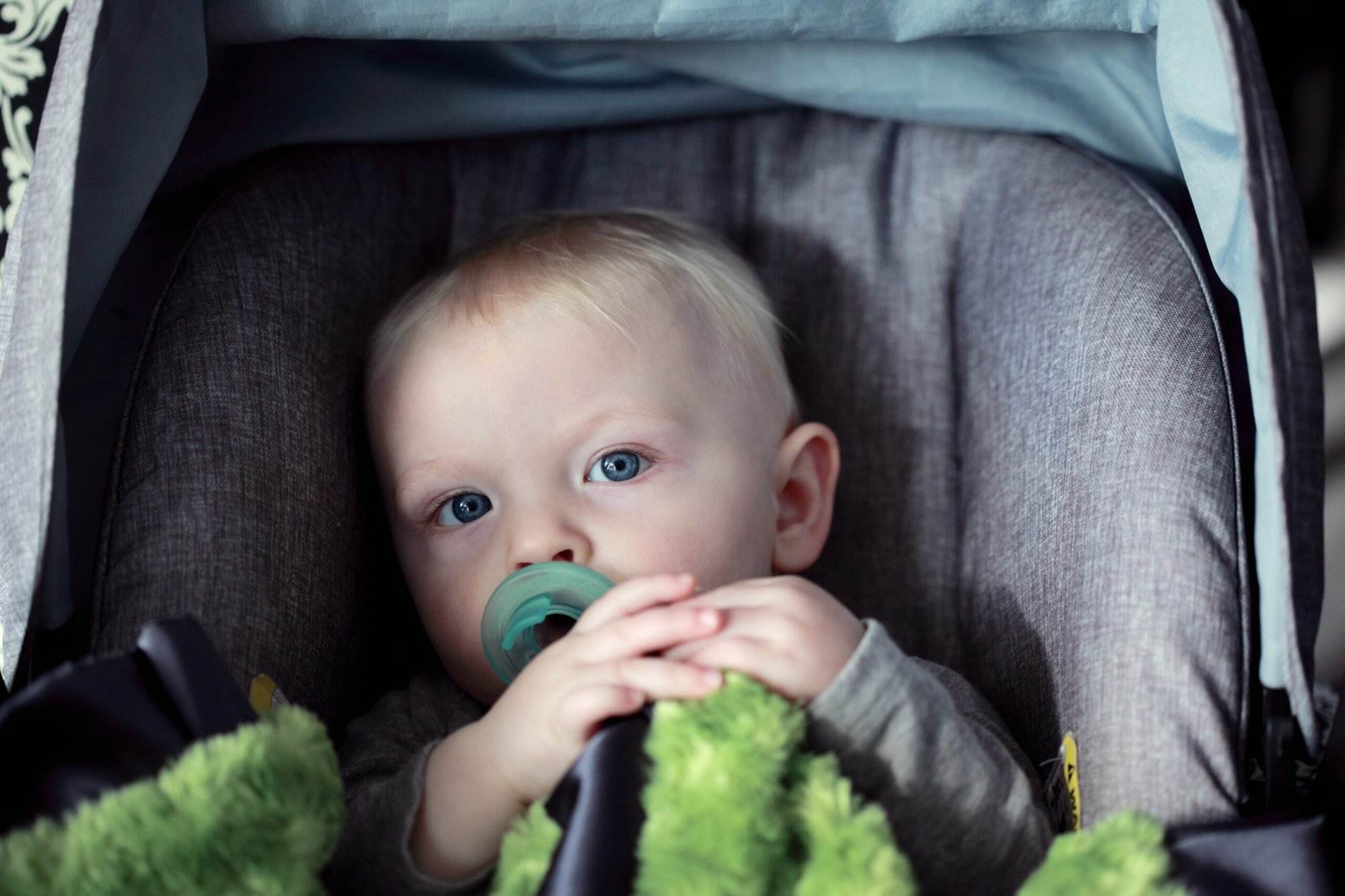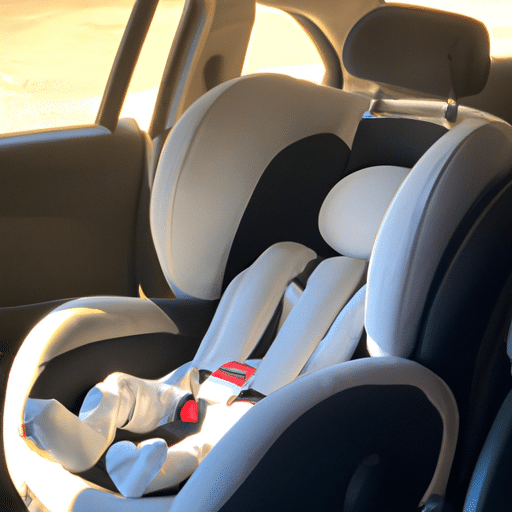Are you a new parent struggling to keep your baby’s head from falling in their car seat? We all know that maintaining the proper position and support for your baby’s head is crucial for their safety and comfort during travel. In this article, you will discover some practical tips and techniques that can help you prevent your baby’s head from falling in a car seat. Say goodbye to those worrisome car rides and ensure a secure and relaxed journey for your little one!
Choose the Right Car Seat
When it comes to keeping your baby safe and secure in a car, choosing the right car seat is crucial. It’s important to consider your baby’s age and size when selecting a car seat. Different car seats are designed for different stages of a child’s development, so make sure you choose one that is appropriate for your baby’s age and size.
Consider the baby’s age and size
Babies grow and develop at different rates, so it’s essential to choose a car seat that is suitable for your baby’s age and size. Infant car seats are designed for newborns and typically have a weight limit of around 35 pounds. Convertible car seats, on the other hand, can be used from infancy all the way up to toddlerhood, as they can be adjusted to accommodate your growing child.
Select a seat with a recline feature
Another important factor to consider when choosing a car seat is the seat’s recline feature. Babies have limited neck and head control, so it’s crucial to position them correctly to prevent their head from falling forward. Look for a car seat that has a recline feature, which allows the seat to be tilted back slightly. This will help keep your baby’s head in a safe and comfortable position during the ride.
Ensure the car seat is properly installed
Installing a car seat correctly is crucial for your baby’s safety. Make sure you follow the car seat manufacturer’s instructions carefully when installing the seat in your vehicle. Double-check that the seat is securely and tightly fastened to the car’s seat and that there is no excessive movement. If you’re unsure about the installation, consider having it checked by a certified car seat technician to ensure it’s done correctly.
Position the Baby Correctly
Once you’ve chosen the right car seat for your baby, it’s essential to position them correctly to ensure their safety and comfort during the ride.

Ensure the baby is rear-facing
According to safety guidelines, babies should be placed in a rear-facing car seat until they reach the maximum weight or height limit specified by the car seat manufacturer. This position offers the best protection for their developing neck and spine in the event of a crash. Always double-check that your baby is correctly positioned in a rear-facing car seat before starting your journey.
Check the recline angle
In addition to being rear-facing, it’s important to ensure that the car seat is installed at the correct recline angle. The recline angle is important because it helps prevent the baby’s head from falling forward, potentially obstructing their airway. Most car seats have indicators or level guides to assist with correct recline angle adjustment. Make sure you follow the instructions provided by the car seat manufacturer to achieve the appropriate recline angle for your baby’s age and weight.
Use a rolled towel or blanket
If you find that your baby’s head is still falling forward even with the correct recline angle, you can use a rolled towel or blanket to provide additional support. Place the rolled towel or blanket on either side of your baby’s head to help keep it upright and prevent it from falling to the side.
Avoid Loose Straps
Properly adjusting the harness straps on your baby’s car seat is essential for their safety. Loose straps can increase the risk of injury in the event of a crash, so make sure you pay attention to the following guidelines.
Adjust the harness straps properly
When securing your baby in a car seat, ensure that the harness straps are adjusted to fit snugly. The straps should be positioned at or below your baby’s shoulders and should not have any twists or tangles. Check the car seat manufacturer’s instructions for precise guidelines on how to adjust the harness straps correctly.

Check for snugness
After buckling your baby into their car seat, give the harness straps a gentle tug to ensure they are snug. You should not be able to pinch any excess material between your fingers. Snug harness straps help keep your baby securely in place during the ride.
Avoid bulky clothing
While it’s natural to want to keep your baby warm and cozy during car rides, it’s important to avoid dressing them in bulky clothing that can affect the proper fit of the harness straps. Bulky clothing can create a gap between your baby and the harness straps, increasing the risk of injury in the event of a crash. Instead, dress your baby in thin layers or use a blanket over the harness straps to keep them warm.
Check for Head Support
To ensure your baby’s head remains properly supported and secure in the car seat, follow these guidelines.
Use a car seat head support device
Some car seats come with built-in head support, but if your car seat doesn’t have this feature, you can use a car seat head support device. These devices are designed to cradle your baby’s head and provide additional support, especially during sleep. Make sure to choose a head support device that is suitable for your baby’s age and size, and follow the manufacturer’s instructions for proper usage.
Ensure the head is supported at all times
During the ride, regularly check that your baby’s head is properly supported. If you notice their head tilting forward or to the side, gently adjust it to a more comfortable position. It’s important to provide ongoing support to prevent their head from falling and potentially causing discomfort or difficulty breathing.

Check the baby’s position during the ride
Periodically monitor your baby’s position in the car seat throughout the journey. Their head should be centered and upright, and their body should be positioned comfortably and securely within the seat. If you notice any signs of discomfort or an awkward head position, stop at a safe location and readjust your baby’s position as needed.
Monitor the Baby During Car Rides
While driving, it’s essential to stay alert and attentive to your baby’s well-being. Follow these tips to ensure a safe and comfortable car ride for your little one.
Frequently check on the baby
Take a quick glance at your baby in the rearview mirror regularly. This simple act can provide reassurance that your baby is safe and comfortable in their car seat. If you notice any signs of distress or discomfort, find a safe place to pull over and attend to your baby’s needs.
Avoid distractions while driving
To prioritize your baby’s safety, it’s crucial to avoid distractions while driving. Keep your focus on the road and refrain from engaging in activities that could divert your attention. This includes refraining from using your phone, eating, or engaging in any other activities that may compromise your ability to drive safely.
Ensure the baby’s head is upright
Maintaining an upright position is important for your baby’s comfort and safety during car rides. A slumped-over or tilted head can obstruct their airway and lead to discomfort or difficulty breathing. If you notice your baby’s head tilting forward or to the side, gently adjust it to an upright position using a rolled towel or a car seat head support device.

Be Mindful of Long Car Rides
Long car rides require extra consideration to ensure your baby’s comfort and well-being. Follow these tips to make long car journeys more manageable for your little one.
Plan for breaks during long trips
When embarking on a long journey, it’s important to plan for regular breaks. Infants and young children need opportunities to stretch, move, and be out of their car seat for a while. Plan scheduled stops where you can safely take your baby out of the car seat and allow them to have some free movement and playtime.
Take the baby out of the car seat periodically
During long car rides, it’s beneficial to take your baby out of the car seat periodically, even during quick pit stops. This allows them to have a change of scenery, stretch their muscles, and have some interaction with you. Find safe locations, such as rest stops or baby-friendly establishments, where you can safely take your baby out of the car seat for a short break.
Provide comfort and support for the baby
Long car rides can be tiring and uncomfortable for little ones. To ensure your baby remains comfortable throughout the journey, provide them with comfort items such as their favorite blanket, a soft toy, or a pacifier. These familiar items can help soothe and reassure your baby, making the journey more enjoyable for both of you.
Consider Alternative Car Seat Accessories
In addition to the basic essentials, there are several car seat accessories that can enhance your baby’s comfort and safety during car rides.

Use a car seat mirror
A car seat mirror allows you to have a clear view of your baby’s face while driving. This accessory can provide peace of mind, as you can quickly check on your baby without having to turn around or take your eyes off the road. Make sure to position the mirror properly and securely attach it to the backseat headrest.
Try a travel neck pillow for the baby
If you’ll be traveling long distances, a travel neck pillow can provide added comfort and support for your baby’s head and neck. These pillows are designed specifically for car seats and can help prevent your baby’s head from falling to the side during sleep. Choose a travel neck pillow that is age-appropriate and ensure that it doesn’t restrict your baby’s movement or breathing.
Utilize a seat belt cover cushion
Seat belt cover cushions can ensure your baby’s comfort during car rides. These cushions attach to the seat belt straps and provide padding and softness against your baby’s sensitive skin. They can help prevent discomfort and irritation caused by the friction of the seat belt straps against their delicate skin.
Educate Caregivers and Babysitters
It’s essential to educate anyone who will be caring for your baby about car seat safety. Whether it’s a relative, a friend, or a babysitter, make sure they understand the importance of proper car seat usage.
Provide instructions on car seat safety
When leaving your baby in someone else’s care, provide clear instructions on how to use the car seat correctly. Show them how to properly buckle and adjust the harness straps, how to ensure the seat is securely installed, and any other specific guidelines provided by the car seat manufacturer.
Demonstrate correct positioning
Whenever possible, demonstrate correct positioning for your baby in the car seat. Show caregivers the appropriate recline angle, how to use support devices if necessary, and how to ensure the baby’s head remains securely supported. By demonstrating the correct techniques, you can help ensure your baby’s safety and comfort even when you’re not present.
Ensure consistent awareness and supervision
Emphasize the importance of consistent awareness and supervision when it comes to car seat usage. Encourage caregivers to check on the baby regularly during car rides, to avoid distractions while driving, and to ensure that the baby’s head is always upright and supported. By promoting consistent awareness and supervision, you can contribute to your baby’s safety even when you’re not the one behind the wheel.
Keep the Car Seat Clean
To maintain a safe and hygienic environment for your baby during car rides, it’s important to regularly clean and maintain the car seat.
Regularly clean and maintain the car seat
Crumbs, spills, and general wear and tear can affect the cleanliness and functionality of your baby’s car seat. Follow the manufacturer’s instructions for cleaning the seat, including the cover, straps, and other removable parts. Regular maintenance will help ensure the car seat remains in optimal condition and provides the necessary safety and comfort for your baby.
Follow the manufacturer’s instructions
When it comes to cleaning and maintaining your baby’s car seat, it’s crucial to follow the specific instructions provided by the manufacturer. Different car seats have different requirements, so make sure you read and understand the instructions before attempting any cleaning or maintenance tasks. This will help ensure that you’re taking the appropriate steps to keep the car seat clean and in good condition.
Remove any loose objects that could pose a hazard
Before placing your baby in the car seat, always check for and remove any loose objects that could pose a hazard. Items such as toys, blankets, or other accessories that are not securely fastened to the car seat can become projectiles in the event of a crash. As a general rule, it’s best to keep the car seat free from any loose objects to maximize your baby’s safety.
Stay Informed about Car Seat Safety
Safety guidelines and best practices for car seat usage are continuously evolving. Stay informed and up to date to ensure you’re providing the best possible protection for your baby.
Stay updated on safety guidelines
Safety guidelines and regulations pertaining to car seat usage can change over time. It’s important to stay updated on the latest recommendations from organizations such as the National Highway Traffic Safety Administration (NHTSA) and the American Academy of Pediatrics (AAP). Regularly review these guidelines to ensure you’re following the most current and recommended practices for your baby’s car seat safety.
Research new car seat models and features
Car seat technology and design are continuously evolving to improve safety and comfort. Take the time to research new car seat models and features to identify any advancements that may benefit your baby. Look for car seats that have been tested and approved by safety organizations and consider reviews and recommendations from other parents to help inform your decision.
Join parenting or car seat safety groups
Joining parenting or car seat safety groups can be a valuable resource for staying informed and connected with other parents. These groups often share up-to-date information, provide support, and offer a platform for asking questions and sharing experiences. By joining these communities, you can stay informed and learn from others who have firsthand experience with car seat safety.
In conclusion, choosing the right car seat, positioning the baby correctly, avoiding loose straps, checking for head support, monitoring the baby during car rides, being mindful of long trips, considering alternative car seat accessories, educating caregivers and babysitters, keeping the car seat clean, and staying informed about car seat safety are essential steps to ensure your baby’s safety and comfort during car rides. By following these guidelines and incorporating them into your car seat routine, you can enjoy peace of mind knowing that you’re providing the best possible protection for your little one on the road.





